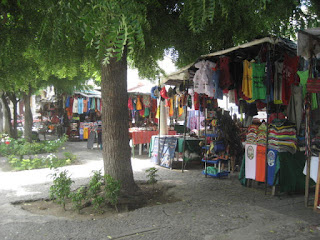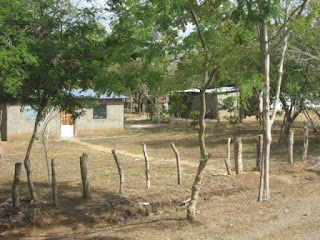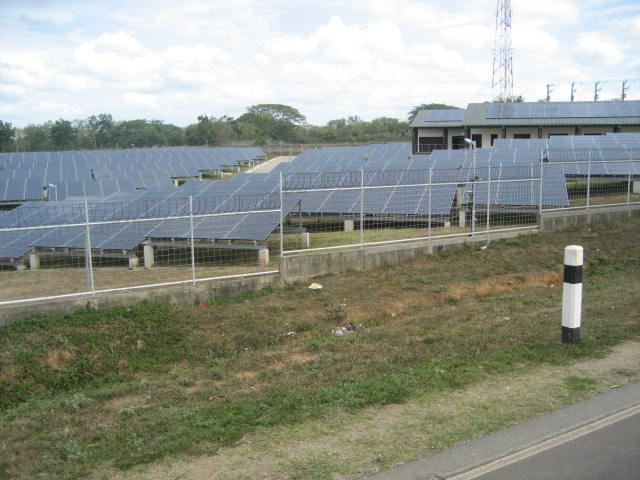Until this past week, I could only imagine a truly wet season, such as they have in Managua, but even there, the rain has not reached normal levels, I'm told. But last weekend, the heavens opened and we enjoyed our first torrential downpours of the rainy season. Rivers formed on both sides of the house, flowing down toward the sea. Palms bent under the weight of the water and wind. I sat on the veranda, bemused by the absolute roar of the elements pounding on the roof, cascading to the tile paving, and the raging river just steps away, carving away the soil and pouring over the wall.
As it happened, a crew of three young men had arrived earlier to install an antenna tower for our internet feed. They first removed the damaged framework, and then prepared the concrete base of the new tower, which involved cementing bolts into place to receive the bottom tower section. The cement needed to dry, so they placed a plastic bag over their work and waited as the storm rolled in.
Three hours later, when the rain had subsided to drizzle, they set about placing the lower half of the tower on the base. This went fairly smoothly, if slightly off-plumb, but with sunset approaching, they had little daylight left when they hoisted up the top portion. Then one chap had to climb the narrow tower to attach the antenna. The photo below shows the same veranda post as in the above pics, but looking toward the sea. (Those little white lights are very pretty at night!) And what looks like a thick horizontal cable is actually a slim electrical cord that runs from the porch roof to the wall opposite and down to feed the antenna.
Unfortunately, the rain revived itself, and all the directional fine-tuning of the antenna had to be done in the dark, in another downpour, though not so furious as the first.
We have had a couple more cloudy days, with intermittent rain, more in one week than in the previous two months. Today, we are crossing our fingers that we shall enjoy clear skies tomorrow evening for the scheduled super moon eclipse over the ocean.
P.S. (Monday morning) Alas, after a sunny day, the clouds moved in just before sunset. Miraculously, a gap in the cover allowed a moon view at about 1/3 until full eclipse, but the window vanished, and the reemergence of la luna occurred unseen in La Boquita.































